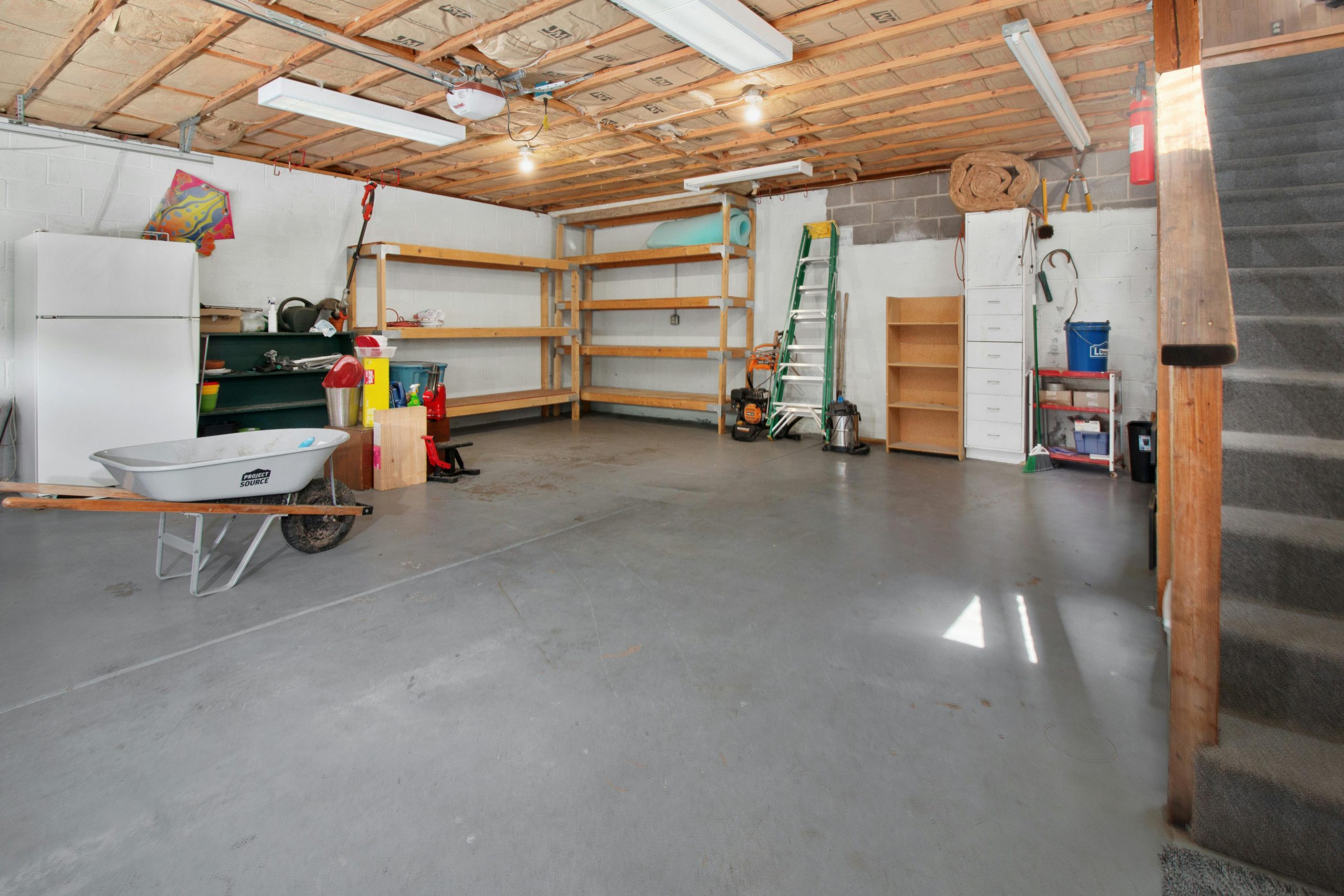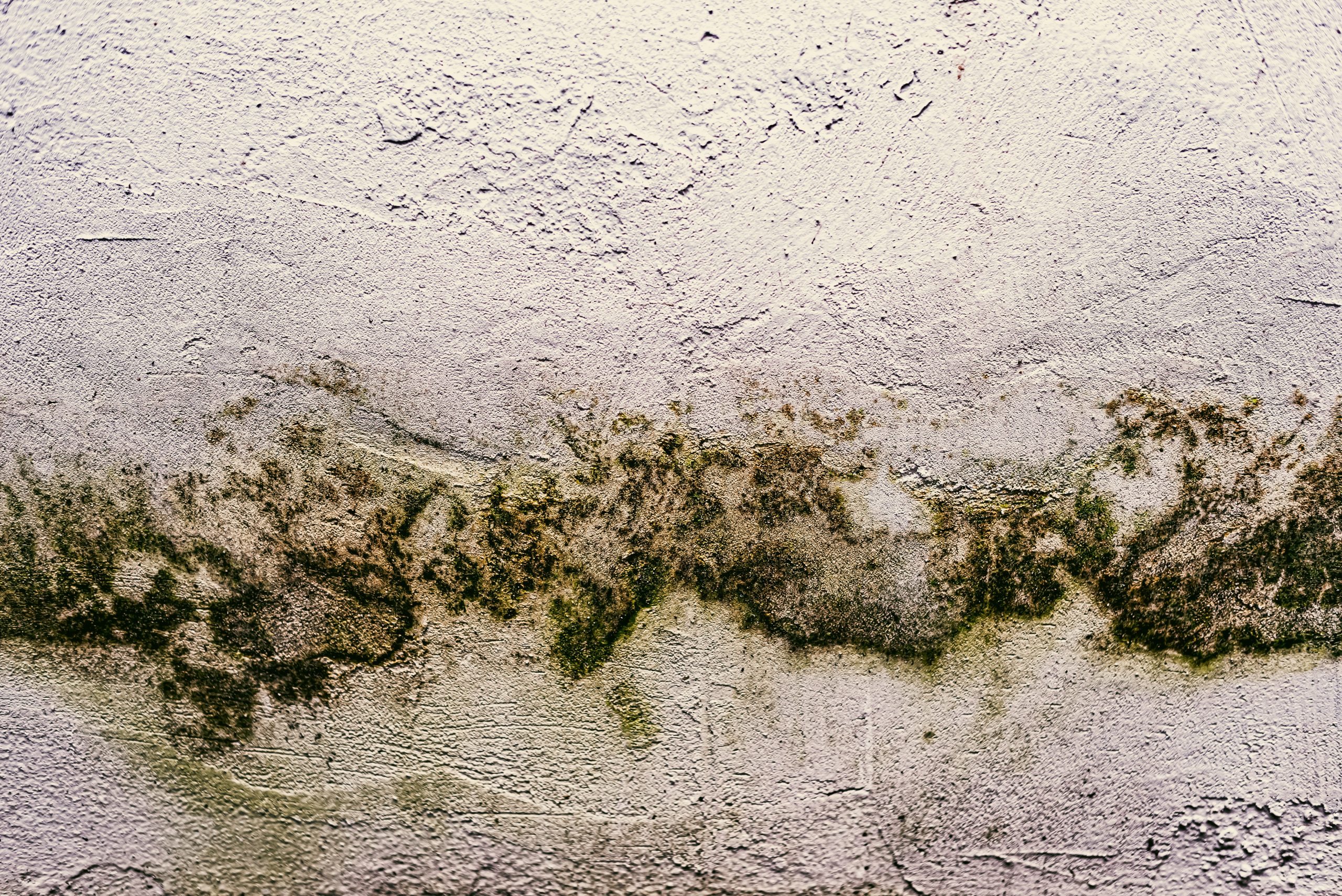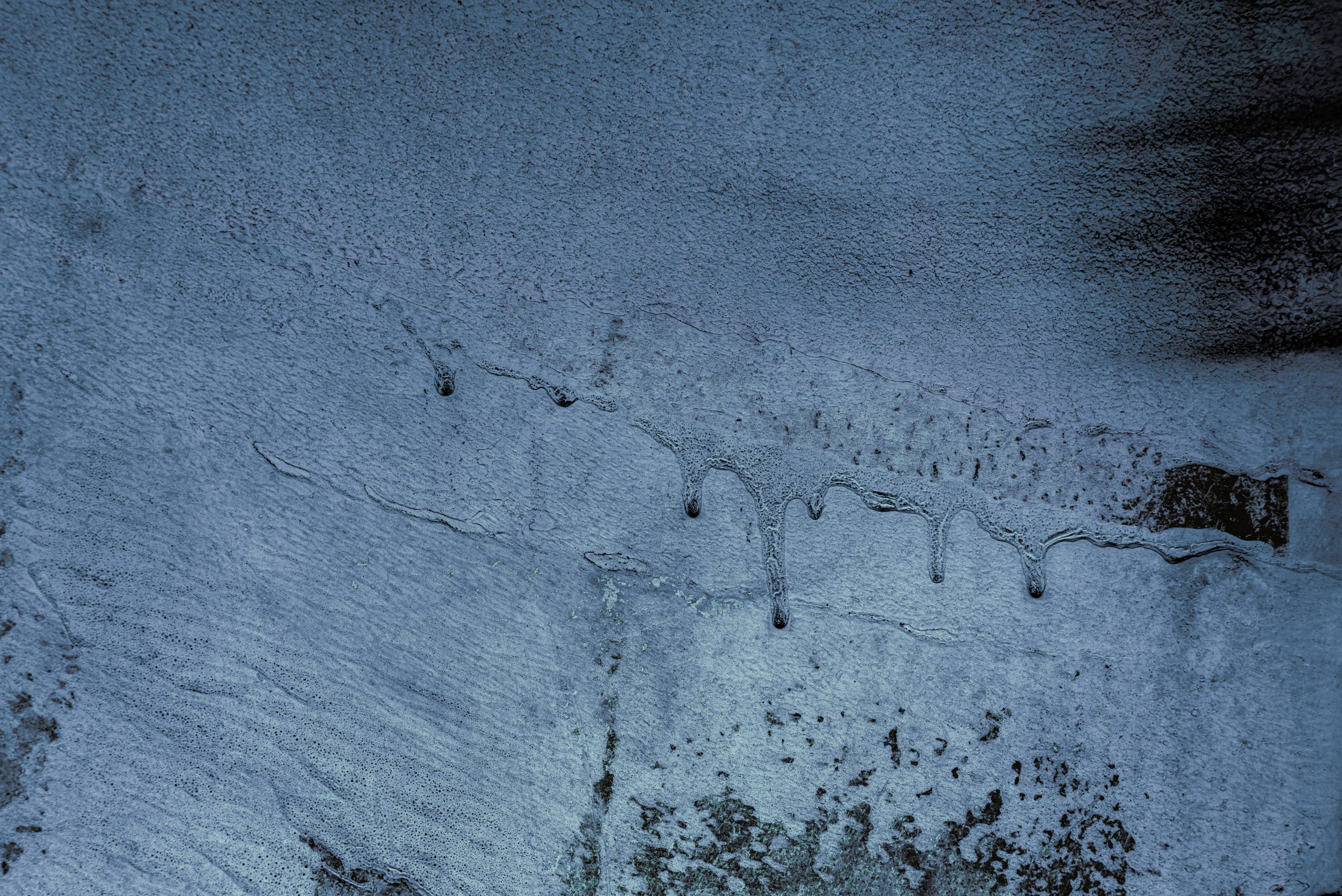
Basements are the backbone of many homes, but they can also be a source of major headaches when water starts seeping in. Basement water damage isn’t just inconvenient—it can lead to mold growth, structural issues, and costly repairs if left untreated. In this guide, we’ll cover everything homeowners need to know about identifying, preventing, and fixing basement water damage.
What Causes Basement Water Damage?
Understanding the root cause of basement water damage is essential to preventing costly repairs and long-term issues. Water can enter your basement in multiple ways, and each requires a different approach to fix:
Cracks in the foundation:
Even tiny cracks in your basement walls or floors can let water in during heavy rain or when groundwater levels rise. Over time, these cracks can widen, allowing more water to seep in and potentially weakening the structural integrity of your foundation.
Poor drainage:
Gutters and downspouts that are clogged, broken, or improperly installed can cause water to pool around your home. When rainwater accumulates near the foundation, it can slowly infiltrate basement walls and floors.
Hydrostatic pressure:
The soil surrounding your basement absorbs water, and as the soil becomes saturated, it exerts pressure on basement walls. This pressure can force water through tiny gaps and cracks, even in well-built foundations.
Plumbing issues:
Leaky or burst pipes, malfunctioning sump pumps, or appliances such as washing machines can introduce large amounts of water into your basement very quickly. Plumbing-related leaks often require immediate attention to prevent major damage.
Window wells and exterior grading:
Poorly sealed basement windows or window wells can allow rainwater to enter. Similarly, if the land around your house slopes toward the foundation instead of away from it, water will naturally flow into your basement during storms or snowmelt.
Identifying the exact cause is crucial because the solution for a leaky pipe differs significantly from the measures needed to stop groundwater seepage. A thorough assessment will guide the most effective repairs and prevention strategies.
How to Spot Basement Water Damage Early

Catching basement water damage early can save thousands in repair costs and prevent secondary problems like mold or structural issues. Watch out for these warning signs:
- Musty odors: A damp, earthy smell in your basement often signals hidden mold or mildew growth, even if you don’t see visible water.
- Discoloration: Look for stains or dark spots on walls, floors, or ceilings. These indicate that water has been penetrating these surfaces over time.
- Peeling paint or wallpaper: Moisture can cause paint or wallpaper to bubble, peel, or flake. This often appears along lower walls or corners where water tends to collect.
- Warped flooring: Wood, laminate, or even carpet can warp or buckle after repeated exposure to moisture.
- Standing water or puddles: While obvious, seasonal or post-storm pooling often goes unnoticed until it causes damage to stored items or flooring.
- Efflorescence: White, powdery deposits on walls or floors signal that water has passed through masonry, leaving mineral deposits behind.
Tip: Regularly inspect your basement, especially after heavy rainfall or rapid snowmelt, to catch problems before they escalate.
What Are the Risks of Ignoring Basement Water Damage?
Even small water issues in your basement can escalate into major problems if ignored. Here are the main risks homeowners face:
- Mold growth: Mold can begin developing within 24–48 hours of water intrusion. Exposure to mold spores can trigger allergies, respiratory problems, or even exacerbate asthma.
- Structural damage: Prolonged water exposure weakens concrete, wood framing, and insulation, potentially compromising your home’s foundation.
- Decreased home value: Visible water stains, mold, or foundation issues reduce your home’s market value and can make selling difficult.
- Electrical hazards: Water in contact with wiring, outlets, or electrical panels can create a serious shock risk or even fire hazards.
- Insect infestations: Damp basements attract pests like termites, cockroaches, and rodents, all of which can lead to further damage.
Recognizing early signs and taking preventive action is key to avoiding these expensive and potentially dangerous outcomes.
How to Protect Your Basement Before Water Damage Happens
Preventive measures are always easier—and cheaper—than fixing water damage after it occurs. Even if your basement is currently dry, taking proactive steps can help avoid future problems:
- Regular inspections: Check basement walls, floors, and windows for moisture, cracks, or other vulnerabilities. Detecting minor issues early can prevent major repairs.
- Maintain plumbing systems: Inspect pipes, hoses, and appliances regularly for leaks or wear. Fixing small plumbing issues before they escalate is crucial.
- Install a dehumidifier: Maintaining indoor humidity below 60% reduces the risk of mold growth and keeps your basement dry.
- Check sump pump functionality: Test your sump pump at least once a year, and ensure it has a battery backup for storm-related power outages.
- Seal small cracks early: Even minor foundation cracks can worsen over time. Sealing them early prevents water infiltration and structural issues.
- Monitor exterior drainage: Ensure gutters, downspouts, and landscaping direct water away from your home. Avoid water pooling near your foundation.
- Keep windows and vents secure: Well-sealed windows, vents, and window wells prevent rainwater, debris, or pests from entering your basement.
Tip: Combining routine maintenance with small upgrades can drastically reduce the likelihood of basement water damage before it ever starts.
How to Dry Out a Wet Basement
When your basement gets wet, quick action can prevent costly damage and mold growth:
- Locate the source of moisture: Before drying, figure out where the water is coming from. Check for leaks from inside your home, such as dryer ducts or condensation on cold water pipes, or from outside, like poor drainage or water seeping through walls. Fixing the source helps prevent the problem from returning.
- Remove standing water: Use a wet/dry vacuum, sump pump, or other water-removal tools to get rid of as much water as possible.
- Speed up drying: Place fans and dehumidifiers in the basement, and open windows if weather allows. Wrapping cold water pipes with insulation can reduce additional moisture from condensation.
- Inspect and protect belongings: Remove any items that have been soaked, including carpets, furniture, or insulation, to reduce the risk of mold growth.
- Treat surfaces: Wash floors, walls, and other affected areas with a gentle detergent solution. For walls that are prone to outside water intrusion, applying a masonry waterproofer can add an extra layer of protection.
- Monitor indoor humidity: Keep the basement’s humidity below 60% until everything is fully dry to prevent lingering dampness
Pro tip: Avoid using heaters that blow hot air directly on wet surfaces, as this can cause mold spores to spread instead of removing them.
How to Prevent Basement Water Damage in the Long Term
Long-term prevention strategies are the most cost-effective way to protect your basement and home:
- Maintain gutters and downspouts: Keep them free of debris and ensure water is directed at least six feet away from the foundation.
- Check grading around your home: Soil should slope away from the house to prevent water accumulation near basement walls.
- Install a sump pump with battery backup: This is especially important in flood-prone areas or during heavy storms.
- Seal foundation cracks: Use epoxy or polyurethane injections to close minor cracks before they worsen.
- Waterproof exterior walls: Apply waterproof membranes or coatings where necessary to protect against groundwater penetration.
- Maintain plumbing systems: Regularly inspect all pipes, hoses, and appliances that could leak water.
- Install window well covers: Protect basement windows from rainwater and debris.
Small, consistent maintenance steps like these significantly reduce the risk of basement flooding over time.
Can Homeowners Handle Basement Water Damage Themselves?
Some basement water issues can be addressed without professional help:
- Sealing small foundation cracks
- Using a dehumidifier to control humidity
- Installing or maintaining a sump pump
However, more serious situations require professional expertise:
- Persistent water intrusion despite DIY efforts
- Major flooding or standing water
- Visible mold or mildew growth
- Structural damage to walls or foundation
- Complex drainage problems outside the home
Hiring a professional ensures a thorough inspection, proper repair, and long-term prevention against recurring water damage.
What Are the Costs of Basement Water Damage Repairs?
Repair costs vary widely depending on the severity and solutions needed:
- Minor sealing and waterproofing: $500 – $1,500
- Sump pump installation: $1,000 – $3,000
- Interior French drain system: $2,000 – $7,000
- Exterior excavation and waterproofing: $5,000 – $15,000
- Mold remediation: $500 – $6,000 depending on extent
Tip: Early prevention and minor repairs are far more cost-effective than waiting until major problems occur.
How Does Basement Water Damage Affect Home Insurance?
Understanding how basement water damage interacts with your home insurance policy is crucial, because not all types of water damage are treated the same. Homeowners often assume that all water-related damage is automatically covered, but coverage can vary widely depending on the source of the water and the specific policy terms.
Sudden, accidental water damage:
Most standard home insurance policies cover unexpected events, such as a burst pipe, a leaking appliance, or a broken water heater. These are considered sudden and accidental, and your policy typically pays for both the repairs to the structure and any damaged personal property. Prompt reporting and documentation of the damage is essential to ensure coverage.
Flooding from rain, groundwater, or surface water:
Damage caused by external flooding—like heavy rain, river overflow, or rising groundwater—is usually not covered under a standard homeowner’s policy. To protect against these risks, homeowners may need a separate flood insurance policy, often available through the National Flood Insurance Program (NFIP) in the U.S. or private insurers in other countries. Flood insurance specifically covers structural damage and certain personal property losses caused by flooding events.
Mold remediation:
Mold growth is a common consequence of basement water damage, but coverage is often limited. Many policies exclude mold unless it results from a covered peril, such as a burst pipe or sudden water leak. Some insurers offer optional mold coverage, which may cover testing, removal, and repairs to affected areas.
Sewer backup or sump pump failure:
Water backing up from a sewer line or failed sump pump is usually not covered by standard policies. Homeowners concerned about these risks may need an endorsement or additional coverage specifically for sewer backup or sump pump overflow.
Tip for homeowners:
Always read your policy carefully and clarify which types of water damage are included and excluded. If your home is in a flood-prone area or has a high water table, consider supplemental coverage or specialized insurance to avoid costly surprises. Keeping detailed records, photos, and maintenance logs can also help streamline claims if damage occurs.
Signs You Need a Professional Inspection
Even if the water problem seems minor, a professional inspection can be worth it:
- Cracks larger than 1/4 inch
- Water intrusion after light rain
- Persistent musty odors
- Uneven or sinking floors
- Visible mold growth
Professionals can use moisture meters and cameras to detect hidden damage and recommend long-term solutions.
Frequently Asked Questions About Basement Water Damage
Can a wet basement cause health problems?
Yes. Mold and mildew can trigger allergies, asthma, and respiratory infections. Prolonged exposure to damp conditions can worsen indoor air quality.
How often should I check my basement for water issues?
Check your basement at least quarterly and after heavy storms or rapid snowmelt.
Can sump pumps fail?
Yes. Sump pumps can fail due to power outages, mechanical issues, or clogging. That’s why battery backup pumps are recommended.
Are waterproofing paints effective?
They can help with minor seepage but are not a permanent solution for heavy water intrusion.
Final Thoughts
Basement water damage is a common but preventable problem. By understanding the causes, spotting early signs, and taking proactive measures, homeowners can protect their investment and maintain a safe, dry living space. Remember, prevention is always cheaper than repair. A well-maintained basement not only adds value to your home but also gives you peace of mind.
If you notice water intrusion in your basement, act fast, assess the source, and implement both short-term fixes and long-term solutions. Whether you tackle minor issues yourself or hire a professional for more extensive problems, staying vigilant is the key to keeping your basement—and your home—safe and dry.



